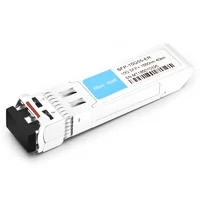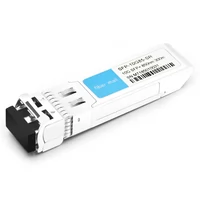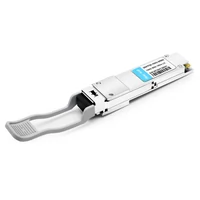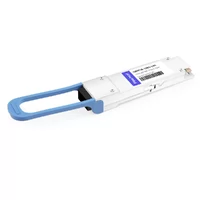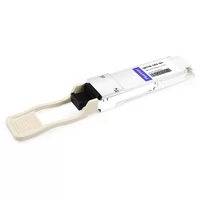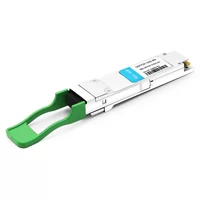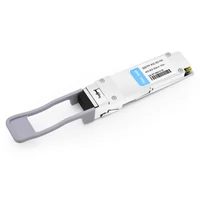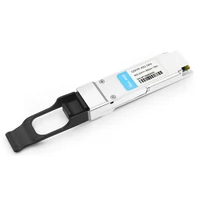In networking, there is nothing more important than having good communication between different devices at different levels. It would not be incorrect to say that, among other things, Cisco transceiver modules are responsible for this smooth flow of information. These small yet potent tools help transmit data from one point to another through optical or copper connections using transmitters and receivers contained within them, respectively. In this article, we shall discuss technical specifications, types, and applications to give our readers a better understanding of what they are used for and why they matter most in any network system. This is done by discussing compatibility, performance measures, or even some installation considerations, which should never be overlooked if one wants his/her network infrastructure optimized enough.
Table of Contents
ToggleWhat is a Cisco Optical Transceiver Module?
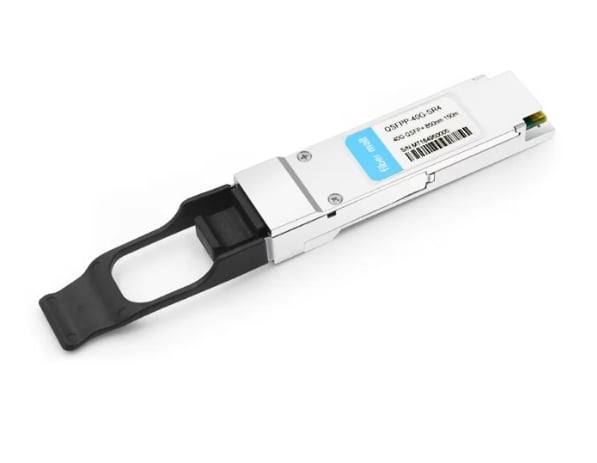
Understanding Cisco Transceivers
A Cisco optical transceiver module is a small gadget that connects a network switch or router to a fiber optic cable, enabling high-speed data transmission over long distances. These modules follow specific standards like SFP (Small Form-Factor Pluggable) or SFP+ (enhanced version), which allow various devices to work together. They work by changing electrical signals into optical signals to send them and then converting them back into electrical signals when received. The choice of the transceiver module affects parameters such as the data rate, the transmission distance, and the network topology; therefore, network professionals have to choose the right one according to their operational needs.
Common Types of Cisco Transceiver Modules
To meet various networking needs, Cisco provides different transceiver modules designed for specific applications and environments. Here are the most commonly used ones:
- Small Form-Factor Pluggable (SFP): These modules have many uses and can support up to 1 Gbps data rates, typically utilized for Ethernet connections over short to medium distances.
- SFP+: An improvement from SFP, these modules can handle speeds of up to 10 Gbps, making them ideal for high-performance networks.
- Quad Small Form-Factor Pluggable (QSFP): By aggregating four 10 Gbps channels, QSFP modules allow higher-density connections with a maximum capacity of 40 Gbps. They work great in data centers that need more bandwidth.
- QSFP+ and QSFP28: These versions were developed based on QSFP; they support data rates of up to 40 Gbps and 100 Gbps, respectively, thus meeting the requirements set by current networks.
- CWDM and DWDM Modules: Coarse Wavelength Division Multiplexing (CWDM) and dense wavelength division multiplexing (DWDM) modules are for long-haul optical networks in which signals are transmitted simultaneously at different wavelengths through one fiber strand.
Choosing the correct type of transceiver module is important, as this will greatly affect network performance. Each module is compatible with certain switches, routers, and cabling systems and also handles variable data throughput and distance requirements.
How Cisco Optical Transceivers Work
Cisco optical transceivers convert electrical signals into optical signals, enabling high-speed data transmission over fiber optic cables. Initially, the transceiver receives an electric signal from a switch or router. Afterward, this electric signal is turned into an optical one through a laser or light-emitting diode (LED) installed in the transceiver. With the help of definite wavelengths depending on the type of transceiver module used, the produced optical signal is transmitted via connected fiber optic cables. Conversely, another transceiver changes an optical signal back into an electrical format so that a network device can process it. This two-way communication allows for efficient data transfer over large distances with low signal loss, which makes these devices essential components of any contemporary networking infrastructure.
How to Choose the Right Cisco Transceiver?
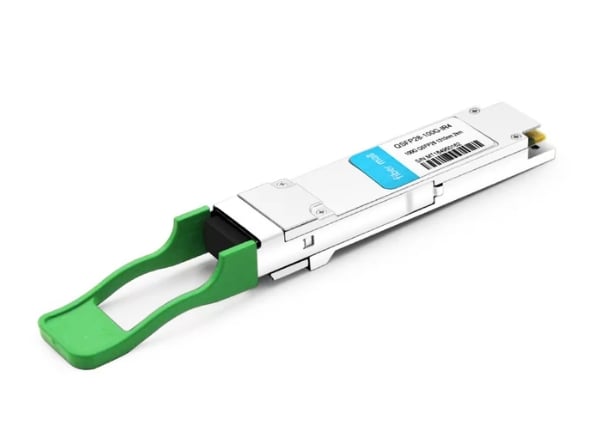
Factors to Consider When Choosing a Cisco Transceiver
When you choose a Cisco transceiver, it’s essential to evaluate some key factors that will help ensure the best performance within your network environment:
- Compatibility: Ensure the transceiver works with your Cisco hardware, such as switches, routers, and cabling systems. You can consult Cisco’s compatibility matrix to determine which models suit you.
- Data Rate: Consider how much data your network needs to move. Cisco transceivers are available at different speeds (1G, 10G, 40G, or 100G), so picking the correct rate is critical for keeping things running smoothly and avoiding bottlenecks.
- Distance: Think about how far apart devices on your network might be from each other. Different kinds of transceivers support different transmission distances – for example, short-range (SR), long-range (LR), or extended long-range (ER), usually measured in meters or kilometers.
- Wavelength: The wavelength at which a transceiver operates affects its performance. Examples include 850 nm for multimode fiber and 1310 nm or 1550 nm for single-mode fiber. You must match these up correctly if you want signals sent through cables to reach the other end!
- Form Factor: Many modules of different sizes and shapes are available, such as SFP, SFP+, QSFP, etc., which all have different interfaces, too. This means that certain kinds won’t physically fit into specific bits of infrastructure, so make sure you know what type you need before buying anything!
- Temperature Range: Some places get hotter or colder than others – especially outdoors or in industrial environments where equipment might be deployed! So, take note of the temperature ranges within which any given model can operate safely.
- Cost & Scalability: Finally, it’s worth considering how much money you have available now and what plans may lay ahead. If there is potential for upgrading in the future (either higher data rates or longer distances), then investing now could save hassle later on down the line.
If you consider each of these points carefully, there’s no reason why any organization shouldn’t be able to choose a Cisco transceiver that will help them achieve their goals.
Compatibility with Cisco Products
To improve the performance of a network, it is essential to ensure compatibility with Cisco goods, which is guaranteed during transceiver selection. As one would expect, Cisco transceivers are made in such a way that they can work well with different types of Cisco hardware, including switches, routers, and optical networking gears. Generally, these transceivers possess a proprietary identification technology Cisco uses to confirm their genuineness. So even though those from other manufacturers might be cheaper, they can cause problems because they don’t match and may even nullify some warranties. Thus, it is good practice to use approved-for-the-model Cisco optics for smooth running, support, and dependability. Besides, visit the company’s website and check out their compatibility matrix for more detailed information on what works with what. Alternatively, ask people who have already been through this in user forums supplemented by technical documentation, which provides hands-on experience.
Understanding Cisco’s Part Numbers and Standards
Cisco’s part numbers are essential for identifying specific transceiver modules and their corresponding specifications. Usually, a part number comprises letters and numbers representing different aspects of a transceiver, such as type, rate, and features. For example, the prefix commonly indicates module type, i.e., SFP (Small Form-factor Pluggable), while subsequent characters may indicate details like transmission speed, i.e., 1G (one gigabit per second), and media type, i.e., LX(for long-wavelength transmission over fiber optics). Additionally, Cisco complies with international standards, including IEEE 802.3, so networking devices can be compatible and perform optimally. These rules help choose the suitable transceiver and make it easy for people to manage stock and replace it quickly when necessary. One should refer to Cisco’s official documentation or support resources for the most recent details about part numbers and standards.
What are the Key Features of Cisco Transceivers?
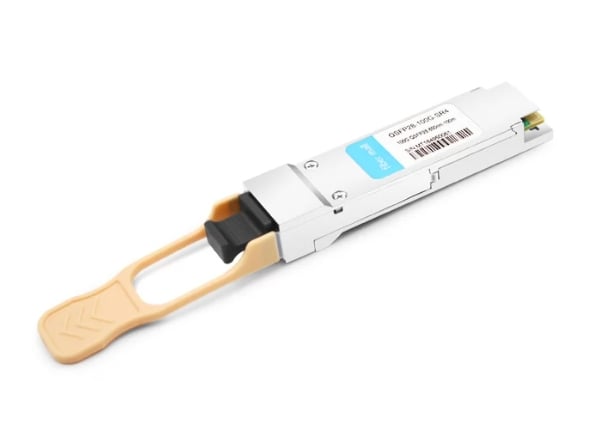
Key Specifications and Performance Metrics
Certain specifications and performance metrics are more important than others when assessing Cisco transceivers because they help us determine whether they can be used in a given application.
- Speed: This feature indicates the highest rate of data transfer achievable (typically expressed in gigabits per second—Gbps). Different rates are available for various network needs, such as 1G, 10G, 40G, and 100G.
- Coverage or Distance: These devices have specific coverage areas that may vary depending on the type of cables employed during transmission. Multi-mode fibers allow shorter distances (up to 300 meters when using 10G), while single-mode fiber optics can span several kilometers.
- Wave Length: For optical transceivers, operational wavelength especially affects compatibility with current infrastructure and the distance signals can travel. Some common examples include 850nm for multi-mode and 1310nm for single-mode applications.
- Physical Connector Interface: It is imperative to examine the physical connector interfaces available to determine whether they will work well with network devices. The most frequently used connectors are LC, SC, or MPO, which also serve diverse cabling needs and network topologies.
- Power Usage / Consumption: Energy efficiency matters greatly in data centers where many devices operate concurrently. Different transceivers have dissimilar power consumption ratings that might impact overall running costs.
- Working Conditions: Commercial-grade modules should be able to function within temperature ranges of 0°C to about 70°C, while industrial-grade modules can withstand much harsher environments with broader temperature ranges. Cisco tests its products under these conditions before releasing them into the market.
You should review Cisco’s technical datasheets and product documentation, which will give you more detailed insights into each model’s capabilities.
Benefits of Using Cisco-Compatible Transceivers
Using transceivers compatible with Cisco equipment has a few significant advantages:
- Efficiency in Terms of Cost: Cisco-compatible transceivers are usually priced lower than those bearing the Cisco brand name. This means that businesses can cut down on their equipment costs and still maintain good network performance.
- Extensive Compatibility: These transceivers meet the same technical standards as Cisco’s other products. Therefore, they can be easily integrated into different types of switches or routers manufactured by Cisco without any compatibility problems. This broad compatibility allows organizations more flexibility when they want to upgrade or expand their networks.
- Performance that is up to Standard: Many third-party companies follow strict quality control procedures, which ensure that their devices work just as well as, if not better than, the ones made by Cisco. In terms of distance, wavelength, and power consumption, among other things, such devices usually have similar specifications, hence reliability at all times within the network.
Thus, by using transceivers compatible with Cisco systems, firms can cost-effectively manage networks while ensuring high performance and interoperability.
Understanding Digital Optical Monitoring (DOM)
Digital Optical Monitoring (DOM) is a technology infused into optical transceivers to enable live viewing of the most critical operational fiber optic links. Typically watched metrics are optical transmit power, receive power, temperature, and laser bias current. These parameters give network administrators knowledge to better manage their systems by detecting failures before they occur and determining if performance is at an optimum level.
Implementing DOM can improve the ability to manage networks through automation that provides alerts when abnormality happens, as well as monitoring tools that make it easier to respond quickly. This saves time and ensures reliability by promptly taking care of the equipment based on how it performs, hence increasing the life span. Any organization heavily relying on solid and fast optical communication systems should have this feature.
How to Install a Cisco Transceiver Module?
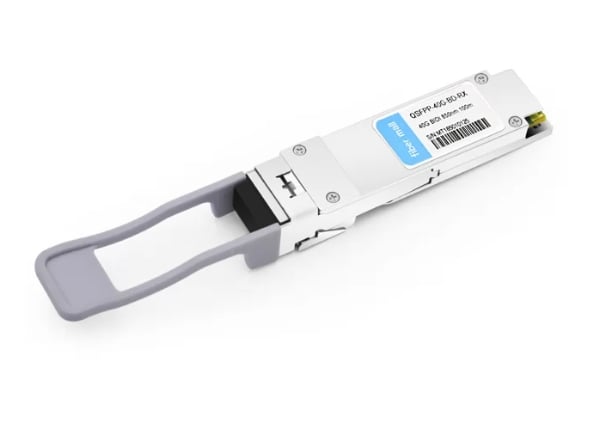
Step-by-Step Installation Guide
- Prepare the Equipment: Before you begin the installation, ensure you have your device’s correct Cisco transceiver module. Gather tools such as an anti-static wrist strap to prevent electrostatic discharge (ESD).
- Power Down the Device: To guarantee a safe installation, power off the networking device (switch or router) on which you will install the transceiver and disconnect it from the power source.
- Remove the Existing Module (if applicable): If a transceiver is already on this slot you are replacing, remove it by pressing the release latch and carefully pulling it out.
- Insert the New Transceiver Module: Fit the Cisco transceiver into the module slot, aligning its interfaces correctly. Then, push until it clicks firmly without causing any damage, but gently. Ensure seating is wholly secured.
- Reconnect the Device: After installing a new transceiver, reconnect it to the power supply, switch it on again, and let it boot fully.
- Verify Installation: Use the CLI or web-based interface of the device’s OS to check whether or not the newly installed transceiver has been recognized by checking its status through commands like ‘show interfaces, ’ etc.
- Connect Fiber Optic Cables: Finally, suitable fiber optic cables are connected to the ports of these receivers while ensuring cleanliness and the absence of dust particles that may negatively affect their performance in the long run.
Troubleshooting Common Installation Issues
When users install a transceiver module produced by Cisco, they may encounter different difficulties that are likely to impede successful deployment. The following are some of the typical problems together with their solutions:
- Transceiver not recognized: If the recently mounted transceiver fails to be noticed by the equipment, check for compatibility with a particular hardware model. Make sure that it is correctly seated, and test on another compatible device to confirm if it is faulty.
- Link status down: Once the link status is shown as down after installation, inspect the fiber optic cable connections to ensure they are securely fitted and show no signs of damage. The right kind of fiber (single-mode or multi-mode) should be used depending on the transceiver specifications.
- Errors in the command output: If commands like ‘show interfaces’ produce unexpected errors or show wrong states, look at the device’s firmware version and update it to the newest release supported by this new transceiver module. You can also review any related configuration settings that might need changes.
By following these steps one after another, users can systematically solve the most common problems during installation while still maintaining high network performance.
Maintaining and Updating Your Cisco Transceivers
Regular maintenance and timely updates are necessary to ensure your Cisco transceivers’ best performance and long life. First, regularly inspect them physically for any sign of wear or damage, ensuring that connectors are clean and free from dust. Use proper cleaning tools, like lint-free wipes with isopropyl alcohol, to keep the connection integrity intact.
As for software updates, always check for the latest firmware available in the Cisco support platform. Updating devices can help prevent potential exploits while improving compatibility with new network functionalities. Occasionally, reviewing device configurations and transceiver performance metrics may be good to identify problems early enough. Also, keeping spare transceivers on hand could minimize downtime during hardware failure events. These steps contribute to dependable network operations and a longer life span of transceiver modules.
What are the Applications of Cisco Transceivers in Networking?
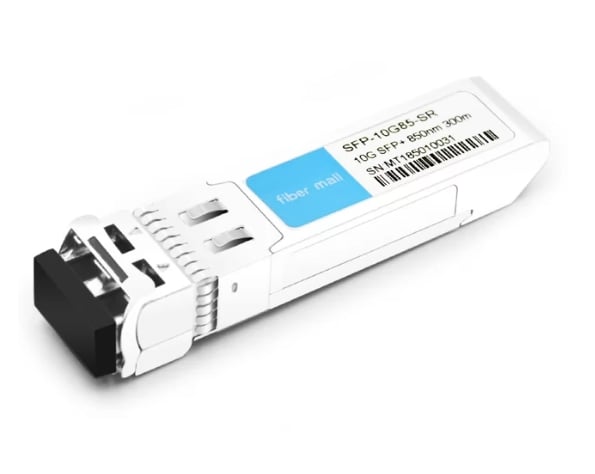
Utilizing Cisco Transceivers in Data Centers
Cisco transceivers are essential for data centers to run faster and more efficiently. They use electrical signals to transmit optical signals, allowing communication through fiber optic cables without interruptions. These gadgets can function at different speeds and protocols, such as Gigabit Ethernet or 10 Gigabit Ethernet, etc., so they are good for various networking requirements.
In most cases, server switches and storage systems within a data center use Cisco transceivers to connect them for reliable connectivity with low latency. For this reason alone, amongst others, being able to support different distances from short-range links inside racks up until long-haul connections between buildings makes these devices very necessary in any data center setup. Also, the fact that these transceivers can be replaced or upgraded without causing downtime thanks to their hot-swappable nature enhances service availability and operational efficiency within the network infrastructure. Overall, therefore, it may be said that integration of a Cisco transceiver into a DC design dramatically improves bandwidth utilization while at the same time supporting scalable networking solutions that can flex with business needs.
Implementing Fiber Optic Networks with Cisco Transceivers
Several essential steps must be followed when deploying fiber optic networks with Cisco transceivers to ensure the best performance and reliability. First and foremost, the right transceiver type must be picked based on required data rates, distances, and specific applications within the network. SFP, SFP+, and QSFP models are just some of the many other speed variants found in Cisco’s portfolio of transceivers, ranging from 1Gbps up to 100Gbps.
Secondly, one must adhere to good installation practices, securely plugging them into compatible switches or routers and ensuring accurate termination and alignment of corresponding fiber optic cables for minimum signal loss. Also, it would be wise enough to put in place an organized cabling system so that everything remains tidy during troubleshooting periods.
Third but not least, the hardware being set up needs continuous monitoring of its performance over time by checking various parameters like the quality of signals received or sent out, whether they are error-free, among others, using suitable management tools for networks designed for such tasks. At times, maintaining them regularly plus upgrading whenever possible can add years to their lives while contributing to the overall resilience of networks.
Lastly, but still crucially important, is verifying compatibility through rigorous testing during integration stages between current infrastructure components and those provided by optical networking solutions developed at Cisco Systems Incorporated (NASDAQ: CSCO). This will not only optimize the utilization rate but also make scaling up easier in the future when needed due to the growth in traffic volume across various points within the organization.
Using Cisco Transceivers in Ethernet and Gigabit Ethernet Networks
Using Cisco transceivers in Ethernet and Gigabit Ethernet networks improves connectivity and flexibility in various applications. In this context, using different media types like copper or fiber optics, the SFP series is used as a transceiver for Ethernet networks to connect switches and routers within short or long distances. For faster data rates with gigabit ethernet, SFP+ models are employed that also work well with the existing infrastructure, thereby enabling efficient data transmission.
It’s important when implementing these transceivers to consider specific bandwidth needs and network architecture. Administrators must ensure that they choose those transceivers that meet the operational standards of the network, such as IEEE 802.3 specifications, for better performance. Additionally, it was said before regular monitoring, together with maintenance practices, is necessary so that signal degradations, among other issues, can be avoided, thus ensuring minimum latency while creating a strong ethernet environment supported by gigabit ethernets using transceivers.
Reference Sources
Frequently Asked Questions (FAQs)
Q: What constitutes a Cisco transceiver module?
A: A Cisco transceiver module is a pluggable device that physically connects routers and switches to the network. To fit different network needs, these modules come in many types, such as SFP, SFP+, QSFP, and QSFP-DD.
Q: Can you use non-Cisco transceiver modules with Cisco products?
A: No, Cisco transceiver modules are only compatible with Cisco products. They have been explicitly designed to work seamlessly together and provide the best performance possible in your network infrastructure.
Q: What does an SFP module do?
A: An SFP (Small Form-factor Pluggable) module is a compact telecommunications and data communications transceiver. It supports single-mode and multimode optical fiber connections, making it flexible and cost-effective for various network applications.
Q: What types of connectivity are available through Cisco transceiver modules?
A: There are several options for connecting with Cisco transceiver modules – MMF (multimode fiber), SMF (single-mode fiber), LC connectors for fiber optic connections, or RJ45 connectors if using copper cabling.
Q: Why should I use compatible transceivers instead of other brands?
A: Using compatible transceivers offers benefits such as cost savings, quality assurance testing against compatibility issues before being sold, lifetime warranties on all products sold by them & compliance with international standards like IEEE/MSA. This ensures stability under any conditions within a Cisco environment.
Q: Why is the 850nm wavelength in Cisco transceiver modules?
A: The 850nm wavelength is commonly used in MMF optical transceiver modules for short-distance connectivity, such as up to 300m over OM3 multimode fiber. This wavelength is often found in transceivers like the SFP-10G-SR compatible SFP modules.
Q: How can I choose a proper transceiver module for my Cisco router or switch?
A: When choosing a transceiver module, you should consider some factors, including required data rate (e.g., 10G, 100G), distance, type of fiber (MMF or SMF), connector type (LC or RJ45), and compatibility with your Cisco switches and routers. It may also be helpful to look at product details and specifications before making decisions.
Q: Can I use third-party compatible SFP modules with my Cisco equipment?
A: Yes, third-party compatible SFP modules can be used with your Cisco equipment. These modules are often quality-tested and designed to comply with Cisco standards, making them less expensive than buying only branded ones from the same company.
Q: What is the typical distance that a 10G SFP module can cover?
A: The usual coverage varies depending on what kind of fiber it’s used over, but generally speaking, an SFP-10G-SR compatible SFP module could cover up to 300m across OM3 multimode fibers, while another single-mode option like SFP+ LR may reach up to 10km.
Q: What is a mode conditioning patch cable? When should I use it?
A: A mode conditioning patch cable allows you to adapt single-mode transmitters into Multimode Fiber Networks where needed. It is typically deployed when running High-Speed 10 Gigabit Ethernet (10GbE) networks to prevent Differential Mode Delay (DMD) and ensure stable connectivity.
Related Products:
-
 Cisco SFP-10G-ER40 Compatible 10G SFP+ ER 1550nm 40km LC SMF DDM Transceiver Module
$80.00
Cisco SFP-10G-ER40 Compatible 10G SFP+ ER 1550nm 40km LC SMF DDM Transceiver Module
$80.00
-
 Cisco SFP-10G-SR Compatible 10G SFP+ SR 850nm 300m LC MMF DDM Transceiver Module
$12.00
Cisco SFP-10G-SR Compatible 10G SFP+ SR 850nm 300m LC MMF DDM Transceiver Module
$12.00
-
 Cisco QSFP-40/100-SRBD Compatible Dual Rate 40G/100G QSFP28 BIDI 850nm & 900nm 100m LC MMF DDM Optical Transceiver
$449.00
Cisco QSFP-40/100-SRBD Compatible Dual Rate 40G/100G QSFP28 BIDI 850nm & 900nm 100m LC MMF DDM Optical Transceiver
$449.00
-
 Cisco QSFP-100G-LR4-S Compatible 100G QSFP28 LR4 1310nm (LAN WDM) 10km LC SMF DDM Transceiver Module
$285.00
Cisco QSFP-100G-LR4-S Compatible 100G QSFP28 LR4 1310nm (LAN WDM) 10km LC SMF DDM Transceiver Module
$285.00
-
 Cisco QSFP-100G-SR4-S Compatible 100G QSFP28 SR4 850nm 100m MTP/MPO MMF DDM Transceiver Module
$40.00
Cisco QSFP-100G-SR4-S Compatible 100G QSFP28 SR4 850nm 100m MTP/MPO MMF DDM Transceiver Module
$40.00
-
 Cisco QSFP-100G-CWDM4-S Compatible 100G QSFP28 CWDM4 1310nm 2km LC SMF DDM Transceiver Module
$110.00
Cisco QSFP-100G-CWDM4-S Compatible 100G QSFP28 CWDM4 1310nm 2km LC SMF DDM Transceiver Module
$110.00
-
 Cisco QSFP-40G-BD-RX Compatible 40G QSFP+ SR Bi-Directional 850nm/900nm 100m/150m Duplex LC MMF Optic Module Receiver Only
$165.00
Cisco QSFP-40G-BD-RX Compatible 40G QSFP+ SR Bi-Directional 850nm/900nm 100m/150m Duplex LC MMF Optic Module Receiver Only
$165.00
-
 Cisco QSFP-40G-SR4-S Compatible 40G QSFP+ SR4 850nm 150m MTP/MPO MMF DDM Transceiver Module
$25.00
Cisco QSFP-40G-SR4-S Compatible 40G QSFP+ SR4 850nm 150m MTP/MPO MMF DDM Transceiver Module
$25.00

